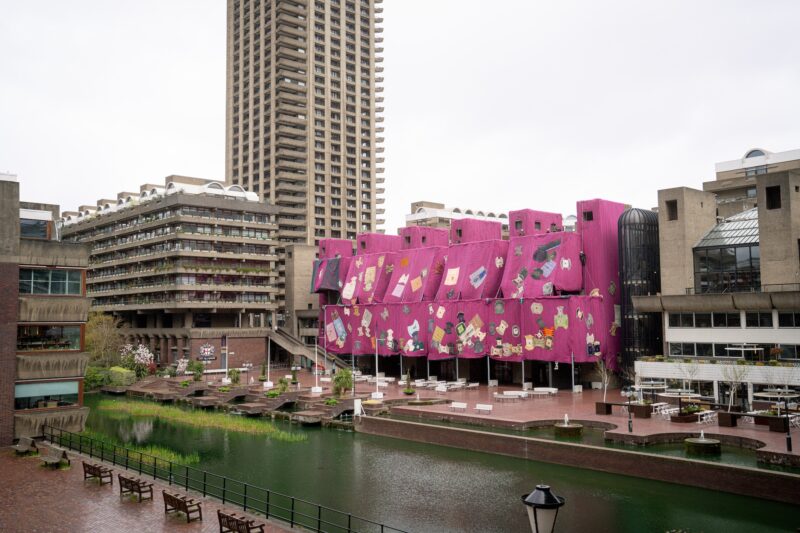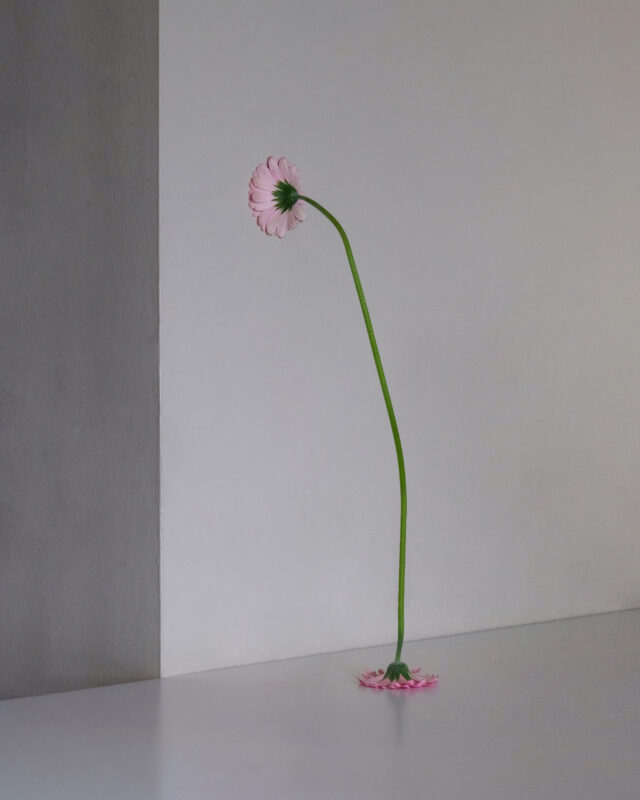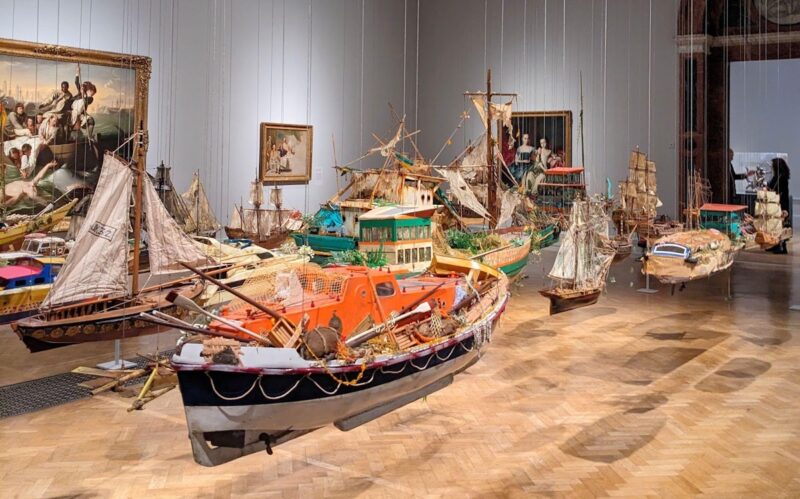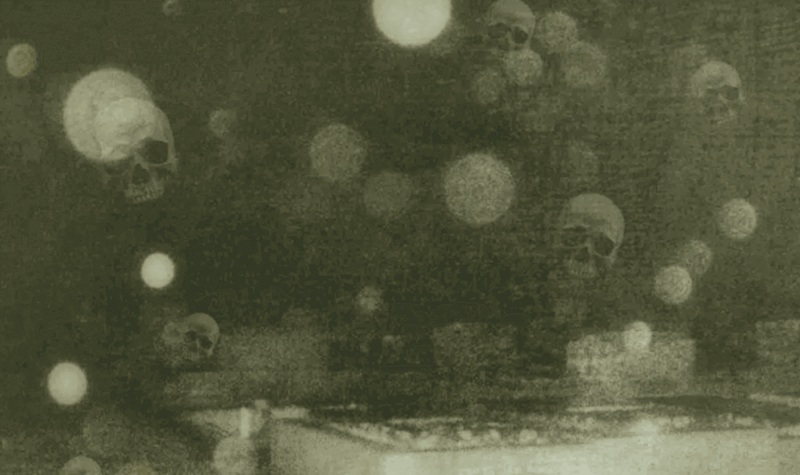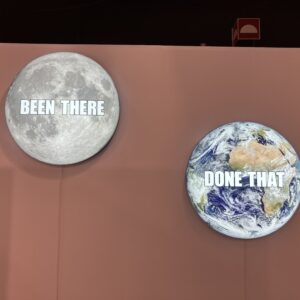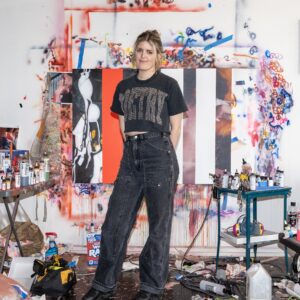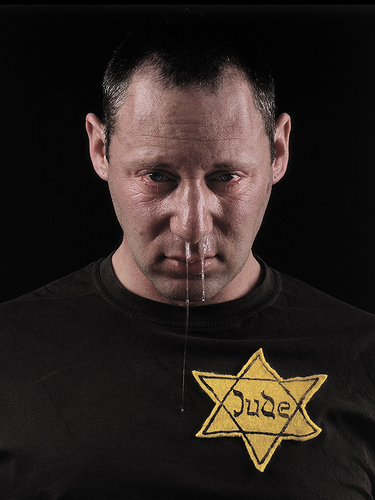
1 When did you start to make art?
When I was about 7 or 8 my father must have noticed a certain streak in me and encouraged me to draw. I took to it straight away. I remember once in the middle of summer I spent the day in the garden drawing a rose in immense detail. It was the first time that I had ever looked so closely at something. Its structure, its imperfections, the little hairs and bits of detritus wedged inside the blossom. I took it to school and showed my teacher. She laughed at me and told me that boys don’t draw flowers. I was teased by the other kids in the class and made an unconscious decision to stop drawing there and then. It wasn’t until I was in my early twenties that I started again. At that time I was taking a lot of LSD and it opened up many repressed levels of my personality.
2 How did you evolve into a professional artist?
I was playing around with various mediums and techniques throughout the mid nineties trying to find my creative path. Somewhere along the line I discovered photography and got pretty into it. Around the time of the .com boom it was pretty easy to get a job as a creative for an Internet company. I was employed as a graphic designer/ photographer/ art director for a lingerie website and this was my opening into studio work.
3 What drove you to make art as a professional vocation?
The fact that doing other stuff for 40 hours a week makes me unhappy.
4 Explain your inspiration?
It usually comes from some sort of negativity inside me. Usually it is frustration or anger at society’s ambivalence. We all have a dark side and rather than choosing to bring it out in my social interaction with people, I express it through art. I took a huge step forward in my practice when I started to visit Palestine and see the suffering that my people were imposing on another, largely innocent population. There wasn’t any use talking about this with Israelis because they didn’t want to hear so I started using my art as a way to communicate. It was around this time when I realised that the street would be a perfect medium for this.
One work has revealed a layer of inspiration that is beginning to play more and more of a central role in my artistic practice. When I first saw Mark Quinn’s cast of his head in his own frozen blood I was blown away. Not only is it an object of transcendental beauty but it also made me realise that as an artist, in order to really prove yourself as an authoritarian voice, you need to give something of your self. Quinn did this very literally but I chose a more symbolic offering of my own suffering as a validator for my comments about the Palestinian plight. This formed the basis of my CS project which will be developed significantly into an important body of work over the coming year.
5 Could your ideas be portrayed in any other medium? If so which?
I have used writing in the past will almost certainly use sculpture more in the future. I was really satisfied by the Isolitude installation where I filled a gallery with cardboard cut-outs. I was working in collaboration with a brilliant sound artist named Amie Slavin who put together an 8 channel dimensional soundscape in an incredibly short timescale. As the viewer moved around the space and between the figures, the aural texture evolved to produce a very rich experience. The entire installation is currently stacked up in my living room and both of us hope to be able to show this in a higher profile venue this year.
6 Which artists would you most like to blatantly rip off?
I wouldn’t. If I did, it wouldn’t be my work anymore and therefore wouldn’t provide me with the creative resolution that I crave. I even feel guilty when I use someone’s work as my inspiration. My recent work has been heavily influenced by a number of artists. A short list would include Lucy Levene, Vanessa Beecroft and Anthony Gormley. If I met any of them I would be pretty apologetic about their practice forming some of the basis of mine.
7 Why is your art made?
Because talking about the things that are important to me doesn’t fill the hole. I can’t express myself deeply enough with words. Art can come straight from the depths of subconscious without analysis being a prerequisite for expression.
8 What does being an artist mean to you?
It means being true to myself and realising the deeper meaning in my existence. It’s my substitute for all that god nonsense.
9 Are you happy with your reasons for making art? i.e Are there any trade offs that make life hard?
There is always a pressure to trade off individual vision for commercially understood style. I could make much more money if my work looked like Jeff Wall, Tracy Emin or Banksy. Consumers of art like their produce to be clearly categorised into a well understood genre. Generally but not always, they are not ready to take a leap into the void.
If I pandered to this however, my work would become be a product rather than art. There are enough artists doing this right now, particularly in the ‘urban art’ scene. The last thing this world needs is another one. Given the choice between making money and being true to myself, poverty would win every time.
10 When does your art become successful?
When I feel satisfied by it.
11 What is art?
An attempt to manipulate the ideological fabric of society.
12 Who prices your work? And how is the price decided upon?
That changes on a more or less constant basis. Maybe once I become more established, it will be easier to answer this question.
13 What is your next; move,project,show etc?
This year I am planning on finally finishing the work which started with my CS series; when I gassed myself as a protest to the use of chemical weaponry against Palestinians. I’m also curating a group exhibition that I hope will be a punctuation point in the urban art movement the same as “Sensation” was for the YBA scene. I’m currently in talks about a book but there are no firm plans yet.
14 What are the pros and cons of the art market?
Galleries are at the centre of the art market. They are useful as they act as a focus for an artists work. If you want to buy Sam Taylor Wood, you phone the White Cube. It might be difficult if you had to phone Sam direct. She might be busy shooting or have her head in other things. Artists are rarely good sales people.
The cons in my opinion outweigh the pros. Galleries promote safe, sellable art. They are rarely progressive to the extent where genres get shattered. They help mundane and formulaic artists rise to the top. It’s tricky for an emerging artist. There are plenty of wrong gallery choices but its difficult to have the patience for the right one to come along.
15 Which pieces would you like to be remembered for?
The ones still to come.
16 Any routine in making your artwork? If so what?
Much of it occurs in my head. Certainly for the first 5 years or so of being a “fine artist” I didn’t really produce any work. I just thought a lot about how to express.
I might start a project with a lot of thinking. Lie-ins, baths and long walks all help in this process. I will reach a point where I am confident that I have more or less fully visualised the work in my head and then I will start trying to prize the conceptual aspect out of my subconscious and put it into words. At this stage I will start doing writing, whether it is on my blog, on flickr, emails to friends or just for myself. Once I start shooting, I will spend a great deal of time experimenting with look. How it will be lit, the film stock to use and development chemistry, which can all really affect the overall feel.
This process from visualisation to testing can take a year or more and might contain pauses in which I will move onto other projects and then return. Once all these steps are complete, the actual shoot, digital postproduction and printing will occur as quickly as I am able to make them happen and then I’m onto the next project before I become bored.
17 What has been the biggest break in your career?
I have had many mini breaks and each has been hard work. The big break will be when I get represented by the perfect gallery for me or when the Tate buys one of my works J
18 Who has been the biggest influence on you?
Myself. I sometimes step back and take stock of what I have achieved and the successes and mistakes that led to it. It helps me plan my future direction. I’m really happy that I am able to say that.
19 How many artworks have you given away and to whom?
Not so many. Some artists swap a lot of their work but I have never been a collector. I give works to people who helped a series come to life or inspired my practice in some way. Occasionally I might be in a position to swap a work for a service that I wouldn’t be able to afford to pay for. I have also recently given away a couple of artists prrofs in competitions and charity raffles.
mikemarcus.blogspot.com
